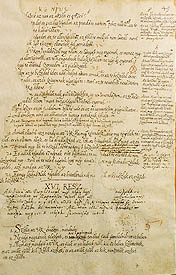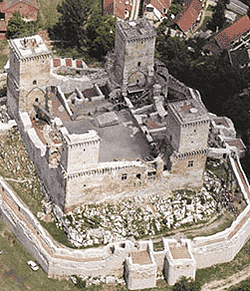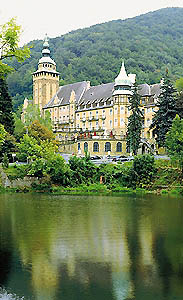Popular destinations nearby
Miskolc,
Aggtelek,
Jósvafő,
Sárospatak,
Tokaj,
Hollóháza,
Mezőkövesd,
Sátoraljaújhely,
Dédestapolcsány,
Edelény,
Encs,
Felsőzsolca,
Kazincbarcika,
Mezőcsát,
Ózd
|
In the county occupying a huge territory you can find tiny villages in the hills and large market-towns, too. The scenery is characterised by rocky ravines in the forests, waterfalls rushing down, open fields with far-away hills, as well as groves on gentle slopes, or fortified castles along with industrial monuments.
The county is rich in monument buildings and cultural heritage, too. Poet and writer Ferenc Kazinczy started his language reform movement from here. To commemorate his activity the neoclassical Kazinczy Mausoleum was opened in Széphalom, according to plans by Miklós Ybl. The first Hungarian language Bible translated by Gáspár Károli is preserved in Vizsoly. In Gönc you can find the so-called House of Hussites, although historians have not found any clear evidence showing that Hussites really lived there. Almost the whole county used to belong to the Rákóczi family. Their castles in Szerencs and in Sárospatak have been preserved in good state of repair. The Rákóczi castle of Sárospatak with its Vörös torony (Red Tower) is "on guard" on the bank of the river Bodrog. Its Lórántffy loggia is a unique Renaissance architectural masterpiece.
The territory of the county seat, Miskolc was inhabited as early as the prehistoric times. The chipped flint implements found in cave Szeleta date back to this period. Hungarians settled down in the area in the period of the Hungarian conquest, and the Miskóc clan, which the town of Miskolc was named after, founded a Benedictine abbey here. The Castle of Diósgyőr was the only castle which served as the queen's residence. Its ruins on the high, rocky hill arising from the valley of the brook Szinva still evokes the long past, the age of the chivalry. Miskolc or the Castle Bath in Diósgyőr await health-conscious visitors, too, who can also relax in Miskolctapolca, in the world-famous Cave Bath, which is situated in unique natural environment. The first industrial monument of Hungary, the Old Foundry can be found in Miskolc, too. In the Orthodox church of Miskolc you can see the highest iconostas of Central Europe.
The "pearl" of the city is Lillafüred, where the secessionist building of the Palotaszálló (The Palace Hotel) attracts visitors, with the largest waterfall of Hungary in its hanging garden. The county is also rich in wine regions: apart from the region called Bükkalja (foot of the Bükk hills), the best-known wine region of the county, which is even mentioned in the national anthem, is the region of Tokaj, part of the World Heritage. Tasting the aszú of Tokaj, the furmint or the szamorodni in cool cellars is an unforgettable experience. The porcelain of Hollóháza is world-famous, which is first of all due to graphic artist Endre Szász, who created a new style of porcelain decoration with his drawings. In the depths of the limestone rocks of the Northern hills wonders are hidden: in the caves of the Aggtelek National Park such as caves Baradla, Béke, Imre Vass, Kossuth, Égerszög and Szabadság you can see shining dripstones of thousands of years. Lodgings in Borsod-Abaúj-Zemplén county: Sights in Borsod-Abaúj-Zemplén county: |
Borsod-Abaúj-Zemplén county map nagyítása >>
in Borsod-Abaúj-Zemplén county:
|
|
|
Hungary - Borsod-Abaúj-Zemplén county |
|
|
|
||
|
Saturday, 19. July 2025. - 01:40:57 |
||



